Related Research Articles
'Hanyu Pinyin', or simply pinyin, is the most common romanization system for Standard Chinese. In official documents, it is referred to as the Chinese Phonetic Alphabet. It is the official system used in China and Singapore, and by the United Nations. Its use has become common when transliterating Standard Chinese mostly regardless of region, though it is less ubiquitous in Taiwan. It is used to teach Standard Chinese, normally written with Chinese characters, to students already familiar with the Latin alphabet. The system makes use of diacritics to indicate the four tones found in Standard Chinese, though these are often omitted in various contexts, such as when spelling Chinese names in non-Chinese texts, or when writing non-Chinese words in Chinese-language texts. Pinyin is also used by various input methods on computers and to categorize entries in some Chinese dictionaries. The word Hànyǔ literally means 'Han language'—meaning, the Chinese language—while pīnyīn (拼音) literally means 'spelled sounds'.

The Four-Corner Method or Four-Corner System is a character-input method used for encoding Chinese characters into either a computer or a manual typewriter, using four or five numerical digits per character.

The Xinhua Zidian, or Xinhua Dictionary, is a Chinese language dictionary published by the Commercial Press. It is the best-selling Chinese dictionary and the world's most popular reference work. In 2016, Guinness World Records officially confirmed that the dictionary, published by The Commercial Press, is the "Most popular dictionary" and the "Best-selling book ". It is considered a symbol of Chinese culture.

A Chinese dictionary is a reference work for the Chinese language. There are two main types of Chinese dictionaries: zidian, which list individual Chinese characters and their definitions, and cidian, which list words and short phrases along with their meanings. Because written Chinese consists of tens of thousands of characters, over time editors of Chinese dictionaries have developed a number of ways to organize them for convenient reference.
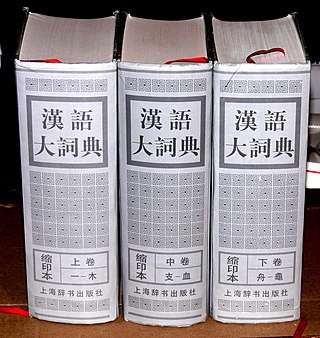
The Hanyu Da Cidian, also known as the Grand Chinese Dictionary, is the most inclusive available Chinese dictionary. Lexicographically comparable to the Oxford English Dictionary, it has diachronic coverage of the Chinese language, and traces usage over three millennia from Chinese classic texts to modern slang. The chief editor Luo Zhufeng (1911–1996), along with a team of over 300 scholars and lexicographers, started the enormous task of compilation in 1979. Publication of the thirteen volumes began with first volume in 1986 and ended with the appendix and index volume in 1994. In 1994, the dictionary also won the National Book Award of China.

Leizhou or LuichewMin is a branch of Min Chinese spoken in Leizhou city, Xuwen County, Mazhang District, most parts of Suixi County and also spoken inside of the linguistically diverse Xiashan District. In the classification of Yuan Jiahua, it was included in the Southern Min group, though it has low intelligibility with other Southern Min varieties. In the classification of Li Rong, used by the Language Atlas of China, it was treated as a separate Min subgroup. Hou Jingyi combined it with Hainanese in a Qiong–Lei group.
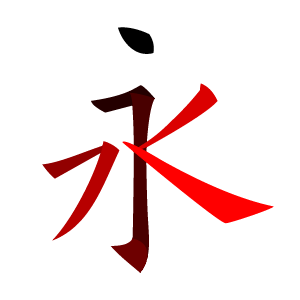
CJK strokes are the calligraphic strokes needed to write the Chinese characters in regular script used in East Asian calligraphy. CJK strokes are the classified set of line patterns that may be arranged and combined to form Chinese characters in use in China, Japan, and Korea.
Bopomofo, also called Zhuyin (zhùyīn), occassionally Mandarin Phonetic Symbols, is a Chinese transliteration and writing system for Mandarin Chinese and other related languages and dialects. More commonly used in Taiwanese Mandarin, it may also be used to transcribe other varieties of Chinese, particularly other varieties of Mandarin Chinese dialects, as well as Taiwanese Hokkien. Consisting of 37 characters and five tone marks, it transcribes all possible sounds in Mandarin.

Xiandai Hanyu Cidian, also known as A Dictionary of Current Chinese or Contemporary Chinese Dictionary is an important one-volume dictionary of Standard Mandarin Chinese published by the Commercial Press, now into its 7th (2016) edition. It was originally edited by Lü Shuxiang and Ding Shengshu as a reference work on modern Standard Mandarin Chinese. Compilation started in 1958 and trial editions were issued in 1960 and 1965, with a number of copies printed in 1973 for internal circulation and comments, but due to the Cultural Revolution the final draft was not completed until the end of 1977, and the first formal edition was not published until December 1978. It was the first People's Republic of China dictionary to be arranged according to Hanyu Pinyin, the phonetic standard for Standard Mandarin Chinese, with explanatory notes in simplified Chinese. The subsequent second through seventh editions were respectively published in 1983, 1996, 2002, 2005, 2012 and 2016.
The Table of Indexing Chinese Character Components is a lexicographic tool used to order the Chinese characters in mainland China. The specification is also known as GF 0011-2009.
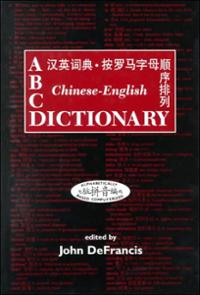
The ABC Chinese–English Dictionary or ABC Dictionary (1996), compiled under the chief editorship of John DeFrancis, is the first Chinese dictionary to collate entries in single-sort alphabetical order of pinyin romanization, and a landmark in the history of Chinese lexicography. It was also the first publication in the University of Hawaiʻi Press's "ABC" series of Chinese dictionaries. They republished the ABC Chinese–English Dictionary in a pocket edition (1999) and desktop reference edition (2000), as well as the expanded ABC Chinese–English Comprehensive Dictionary (2003), and dual ABC English–Chinese, Chinese–English Dictionary (2010). Furthermore, the ABC Dictionary databases have been developed into computer applications such as Wenlin Software for learning Chinese (1997).
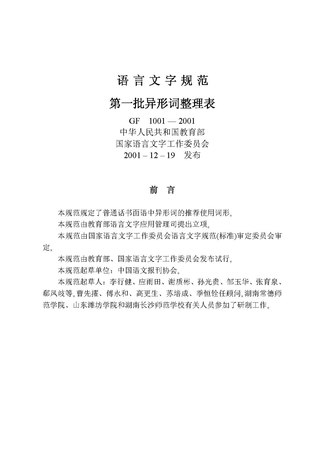
The First Series of Standardized Forms of Words with Non-standardized Variant Forms published on December 19, 2001 and officially implemented on March 31, 2002, is a Standard Chinese style guide published in China. It contains 338 Standard Chinese words that have variant written forms. In the First Series, one of the variant written forms for each word was selected as the recommended standard form.
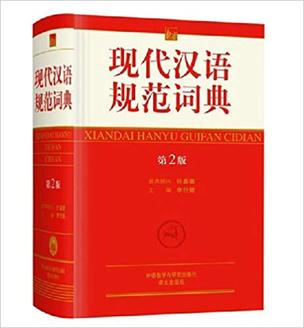
Xiandai Hanyu Guifan Cidian is a dictionary of Standard Chinese created as part of a proposal in the Eighth Five-year Plan of China. It is similar to Xiandai Hanyu Cidian, but with notable divergences. The third edition has entries for 12,000 characters and 72,000 words, with over 80,000 example usages.
Modern Chinese characters are the Chinese characters used in modern languages, especially in the standard Mandarin Chinese.
Strokes are the most basic writing units of Chinese characters. Stroke-based sorting, also called stroke-based ordering or stroke-based order, is one of the five sorting methods frequently used in modern Chinese dictionaries, the others being radical-based sorting, pinyin-based sorting, bopomofo and the four-corner method. In addition to functioning as an independent sorting method, stroke-based sorting is often employed to support the other methods. For example, in Xinhua Dictionary (新华字典), Xiandai Hanyu Cidian (现代汉语词典) and Oxford Chinese Dictionary, stroke-based sorting is used to sort homophones in Pinyin sorting, while in radical-based sorting it helps to sort the radical list, the characters under a common radical, as well as the list of characters difficult to lookup by radicals.
The GB stroke-based order, full name GB13000.1 Character Set Chinese Character Order , is a standard released by the National Language Commission of China in 1999. It is the current national standard for stroke-based sorting, and has been applied to the arrangement of the List of Commonly-used Standard Chinese Characters (通用规范汉字表), and the new versions of Xinhua Zidian and Xiandai Hanyu Cidian, etc.
Chinese character order, or Chinese character indexing, Chinese character collation and Chinese character sorting, is the way in which a Chinese character set is sorted into a sequence for the convenience of information retrieval. It may also refer to the sequence so produced.
The YES stroke alphabetical order, also called YES stroke-order sorting, briefly YES order or YES sorting, is a Chinese character sorting method based on a stroke alphabet and stroke orders. It is a simplified stroke-based sorting method free of stroke counting and grouping.
Chinese character sounds are the pronunciations of Chinese characters. The standard sounds of Chinese characters are based on the phonetic system of Beijing dialect.
References
- ↑ Kleeman, Julie (and Harry Yu) (2010). Oxford Chinese Dictionary (牛津英漢-漢英詞典). Oxfoed: Oxford University Press. ISBN 978-0-19-920761-9.
- 1 2 3 Wang, Ning (王寧,鄒曉麗) (2003). 工具書 (Reference Books) (in Chinese). Hong Kong: 和平圖書有限公司. pp. 27–28. ISBN 962-238-363-7.
- 1 2 3 Zhan, Deyou (詹德优等) (2008). 中文工具書使用法 (How to use Chinese reference books) (in Chinese). Beijing: Commercial Press. pp. 24–25. ISBN 978-7-100-01510-3.
- 1 2 Yang, Runlu (杨润陆) (2008). 现代汉字学 (Modern Chinese Characters) (in Chinese). Beijing: Beijing Normal University Press. pp. 200–202. ISBN 978-7-303-09437-0.
- ↑ https://www.bbc.co.uk/bitesize/topics/zcgv39q/articles/zsv6wnb
- ↑ Language Institute, Chinese Academy of Social Sciences (2020). 新华字典 (Xinhua Dictionary ) (in Chinese) (12th ed.). Beijing: Commercial Press. ISBN 978-7-100-17093-2.
- ↑ Language Institute, Chinese Academy of Social Sciences (2016). 现代汉语词典 (Modern Chinese Dictionary) (in Chinese) (7th ed.). Beijing: Commercial Press. ISBN 978-7-100-12450-8.
- ↑ Su, Peicheng (苏培成) (2014). 现代汉字学纲要 (Essentials of Modern Chinese Characters) (in Chinese) (3rd ed.). Beijing: Commercial Press. pp. 201–202. ISBN 978-7-100-10440-1.
- ↑ DeFrancis, John, ed. (2003). ABC Chinese–English Comprehensive Dictionary. University of Hawaiʻi Press. ISBN 9780824827663.